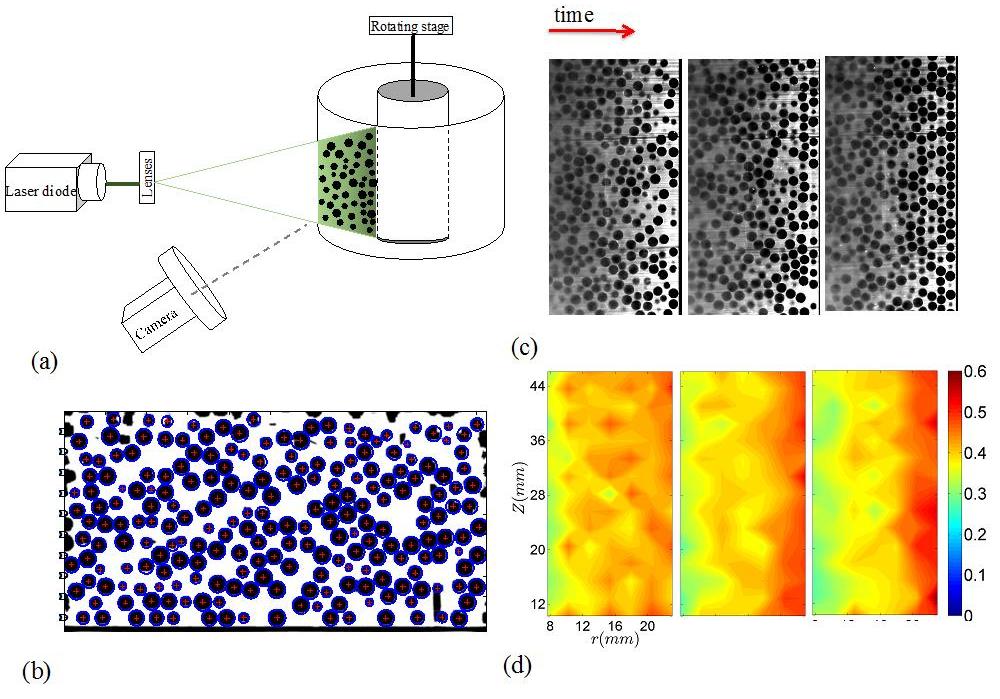Reports: DNI955661-DNI9: The Fluid Mechanics of Channel Fracturing Technique
Sarah Hormozi, PhD, Ohio University
Summary and objectives:
In hydraulic fracturing, specially engineered suspensions are pumped at high pressure and rate into the reservoir, causing a propagating fracture to open. When the pressure is released the fracture is supported by the grains of solid (proppant) that are left behind. Recent trends in the oil industry have included the use of cyclic pumping of proppant slurry interspersed with clear fracturing fluid, which is found to increase the subsequent productivity. The recent process variation is called the Channel Fracturing Technique (CFT). The key concept in CFT is to substitute the usual continuous stream of proppant slurry that fills the fracture, with discrete pillars of proppant that hold open the fracture. It is therefore of interest to understand how slugs of proppant pumped in a cyclic fashion can disperse within the fracture. One proposed method for controlling dispersion is via the fracturing fluid rheology, and in particular, use of a yield stress fluid, which may also enhance the transport capacity. In this work we aim to study the transport and dispersion of solid particles in yield stress fluids via performing experiments in a cylindrical Couette cell configuration and a channel cell (Hele-Shaw cell) configuration. The latter configuration approximately resembles the fracture geometry.
Accomplishments to date:
We first developed a model framework for studying flows in CFT to design the experimental matrices and setups in accord with the possible flow regimes. To this end, we carried out an order of magnitude analysis of proppant transport along typical hydraulic fractures using yield stress fluids, specifically focusing on the macro scale flow and the particle scale. We showed in a non-homogeneous shear flow across the fracture, there is a significant variation in the local particle Reynolds number due to the change in the local shear rate which itself is a consequence of pseudo-plug regions and presence of particles. Therefore, in the low shear rate region the Stokesian particle regime is applicable, however, in the high shear rate region, particle regimes may vary from Stokesian to inertial. Hence, unlike Newtonian suspensions, both Stokesian and inertial flow regimes may exist in fracturing flows of yield stress fluids. We developed a two-phase continuum framework for modeling fracturing flows, which incorporate the shear thinning and yield stress rheology of the suspending fluid and inertial and unsteady ranges of particle behavior. Finally, we reduced the overall model using Hele-Shaw scaling arguments to arrive at systems of reduced equations that model flows in CFT. We obtained a one-dimensional model of proppant dispersion along a streamline of the width-averaged flow and we found that to leading order dispersion is advective not diffusive.
Currently, we use the developed model framework to design and build (i) a channel flow loop with proper dimensions (ii) possible yield stress suspensions and (iii) experimental techniques to study pulsed proppant distributions such as in the CFT. We aim to study flow profiles and streamwise solid dispersion in CFT for a range of power law index, Bingham number (ratio of the yield stress to the viscous stress) and Reynolds number (ratio of the inertial stress to the viscous stress).
The proposed experiments are essential components to test and improve our model framework. To this end, we also study the solid dispersion in a cylindrical Couette cell configuration with a wide gap. We use Particle Image Velocimetry and Particle Tracking Velocimetry (PIV and PTV) to obtain the velocity profile and the solid volume fraction respectively. In a non-homogeneous shear flow (such as a wide gap Couette flow), it is observed that particles migrate from the high shear rate region to the low shear rate region. This phenomenon is called Shear-Induced Migration (SIM). Our developed model framework shows that SIM plays an important role in the streamwise solid dispersion via a flux function that depends on the first covariance of the velocity profile and the solid volume fraction. We have performed a series of experiments for a range of solid volume fractions to measure the kinetics of SIM in the case of a Newtonian suspending fluid.
Figure 1 shows a typical example of SIM in the cylindrical Couette cell. We see that, initially the solid volume fraction is homogeneous but as we rotate the inner cylinder, the particles migrate from the high shear rate region (inner cylinder) toward the low shear rate region (outer cylinder) and accumulate there. PTV gives the exact position of particles (via performing Hough transform figure 1(b) and figure 1(c)) from which we can extract the evolution of the solid volume fraction over time (figure 1(d)). Our results show a faster time scale of migration compare to that reported in the literature. This knowledge of the migration time scale is essential for designing the channel cell with adequate dimensions to study pulsed proppant distributions such as in the CFT. At the present, we are working to understand the kinetics of SIM in a yield stress suspending fluid using a cylindrical Couette cell. It is noteworthy to mention that the kinetics of SIM in yield stress suspending fluids, unlike Newtonian suspending fluids, is not only strain-dependent but also deformation-rate dependent.
Figure 1: (a) Schematic of the cylindrical Couette cell (b) Raw image of the suspension in the annulus, the image shows good matching between refractive indices of particles and suspending fluid (center and surface of particles in red and blue overlaid on the image) (c) The dispersion of particles in the annulus over time (d) The evolution of the solid volume fraction over time.












